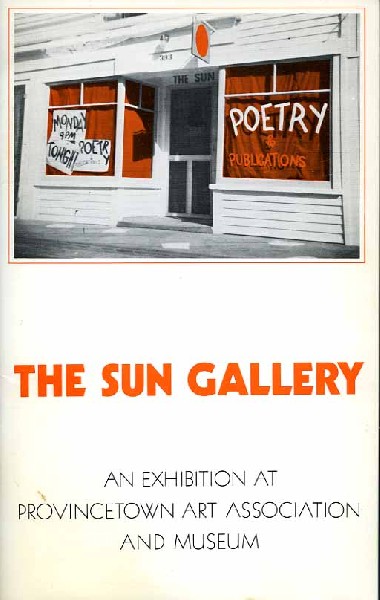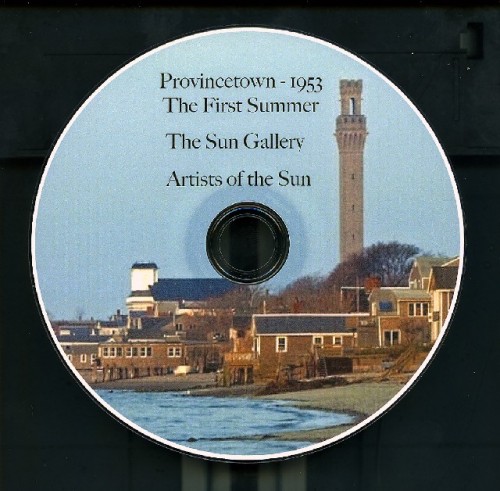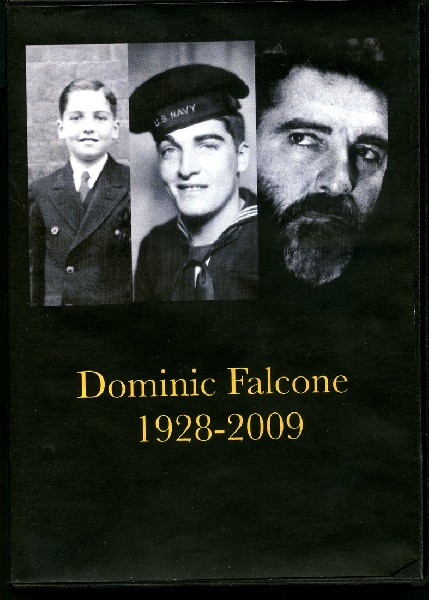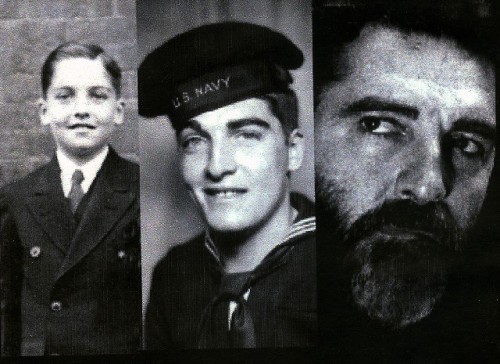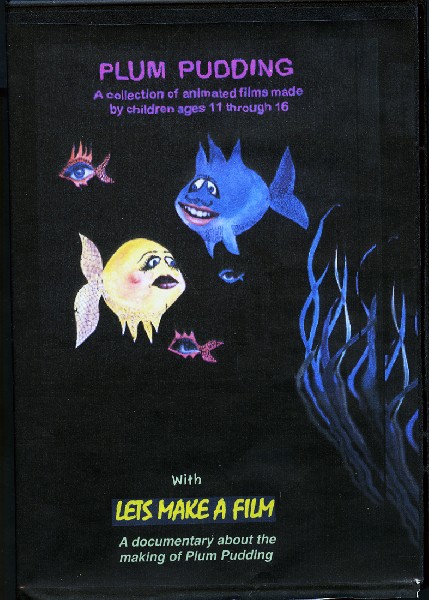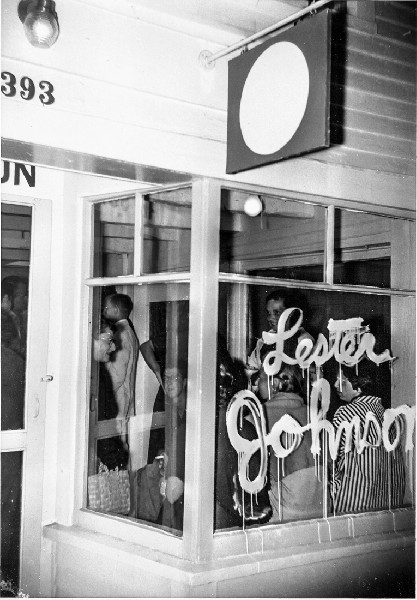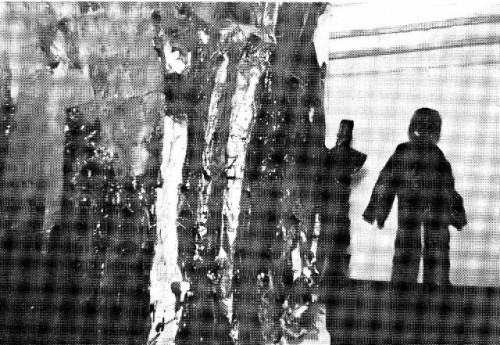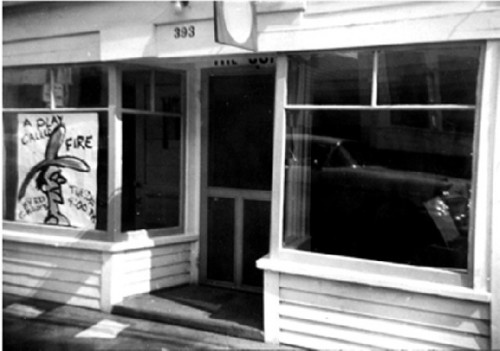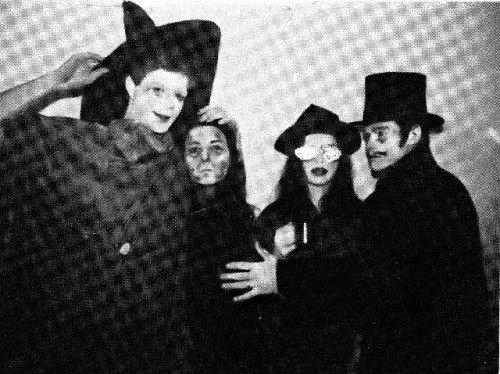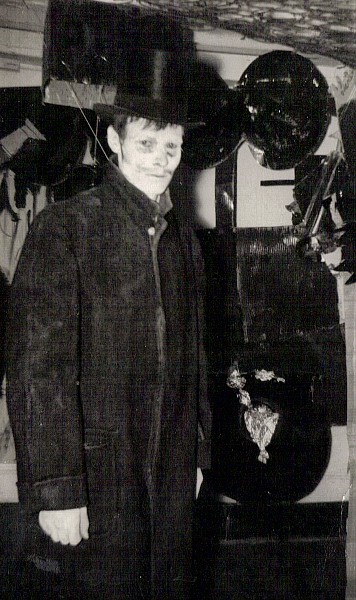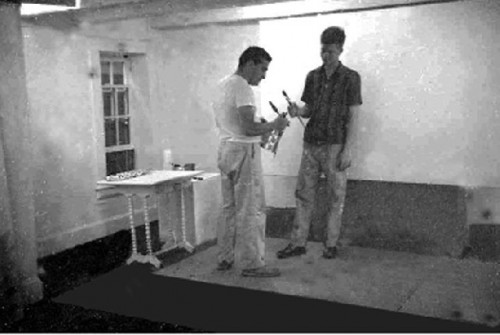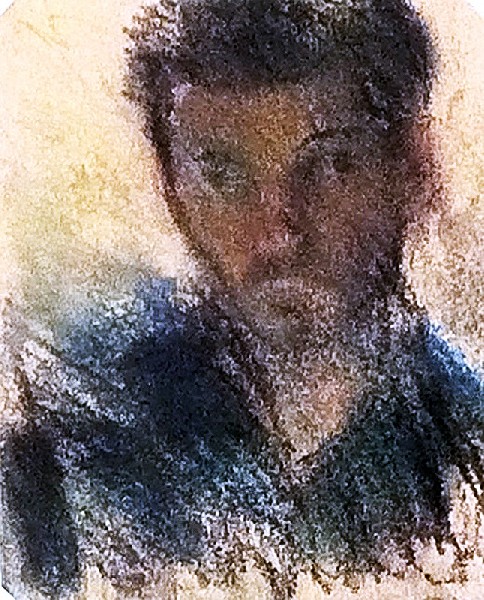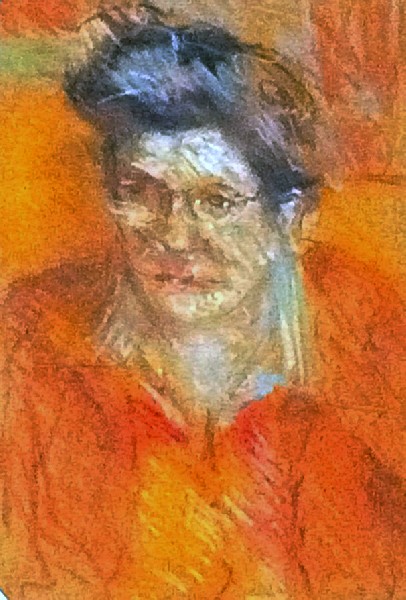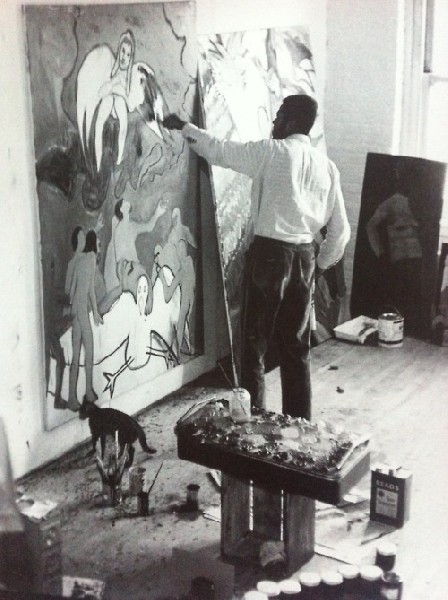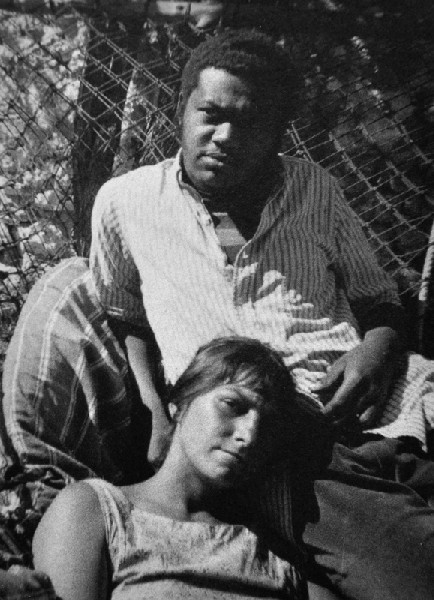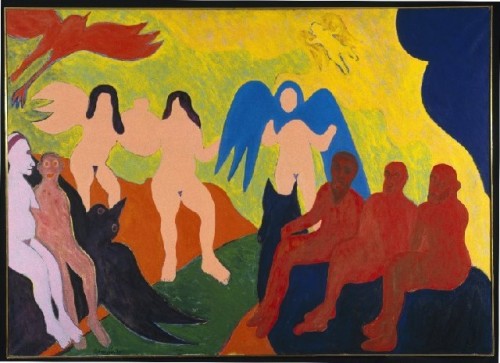Provincetown's Legendary Sun Gallery
Yvonne Andersen Part Two
By: Yvonne Andersen and Charles Giuliano - May 13, 2013
Charles Giuliano When I was working with Lester (Johnson) for a museum catalogue he gave me a video of him in the 1960s working on huge heads. Did you shoot that?
Yvonne Andersen No. I have several videos of Lester. One was shot in his studio when he was on the Bowery early (1960s). The place was just filled with paintings. We sort of interviewed him and looked at the paintings. We don’t get him actually painting. While we were there with Lester, Angelo Ippolito, in the same building came down and invited us to come up afterwards and see his stuff. We had also showed Angelo Ippolito who was pretty abstract. Angelo’s place was spotless. It was like going from a mud hole to a hospital. He was a very good friend of my husband, Val (Dominic Falcone) When we first set up our gallery he would come for coffee every morning and visit with us.
CG What about Jay Milder. Did he show with you?
YA This is what happened with Jay and Bob Thompson. Val and I lived with Red in a loft in New York in 1958 and did a number of projects together. Then we went to Provincetown. At the end of the summer Red returned to New York and started a gallery himself in New York with Jay Milder.
Red wasn’t in Provincetown too much that next summer (1959). He came in time for his show. When he arrived he said he didn’t want to have a one man show. He wanted to have a show with his friends. I said OK. His friends were Jay Milder, who I had not met before, and Bob Thompson who I had met. Bob is actually in my documentary for a few minutes. I have a very nice closeup on him. So the three guys, who were penniless at the time, as was everyone in those days, crashed on the floor of the gallery for the night. Then they hung the show. A three man show.
It was particularly spectacular because Red had a black and white drawing that went from the floor to the ceiling. Of a face, a man’s face. I never got a really good shot of the gallery from outside but someone sent me a terrific photo outside the gallery at night with all those paintings in there and Red’s huge startling portrait.
CG What do you remember about Bob Thompson?
YA I remember him as having a very nice personality. A handsome guy. I can’t remember too much about his artwork. I didn’t study him. He was very well thought of by other artists. Our last project at the Sun Gallery occurred a month after the three man show. It was “THE WALKING MAN.“ It was the first “Happening” with live actors. Red, Sylvia Small, his girl friend at the time, Bill Barrell, Val and myself were the actors. We made a 20 minute presentation, that night...twice. It was so popular that we had to run it 5 more nights. Then we left town.
CG Did you ever know an artist and jewelry maker who had a gallery in P’Town named Earle Pilgrim?
YA Oh God. We were in his place. That’s where the Sun Gallery was. It’s that same building. When I was in Provincetown for the two years before we made the Sun Gallery that was his place. It was very strange. Very dark. Sort of a slight feeling of evil about it. Unique. Earle Pilgrim would be down in one corner. He made jewelry. I bought one of his rings. A wonderful double ring with a snake coming out of it. His wife (Lilly) did these dark strange puppets.
I did not know them well but I bought a ring there. I liked the place.
CG Did you ever show him?
YA He was gone. We were shocked to see his place dark when we got there. Val said this is our place. We gave the landlady $500. Not all of it immediately.
CG How about Benny Andrews?
YA First let me tell you a little bit more about Earle Pilgrim. For at least one or two summers he was showing artists there. I remember mostly they were outside on the sidewalk. I’m sure he had stuff inside also. He had Lester Johnson’s stuff. That was the first time Val and I saw Lester Johnson’s work. He had John Grillo. Possibly Wolf Kahn but I don’t know. I remember distinctly. It was very informal. It was one of those wonderful unique places.
Ok now Benny Andrews. I know that name. I didn’t know Benny Andrews or his artwork but I know the name.
CG By any chance did you know Emilio Cruz?
YA Yes. My husband worked in the restaurants. When I first got to Provincetown that’s when Ciro and Sal started their restaurant. They had mostly sandwiches. I couldn’t afford to go there. I was a waitress at the time. I had no money. Emilio was sort of around. I made a documentary film at Sal’s Place in the early '60s that featured an artists’ party.
The two restaurants, Ciro and Sal's, and Sal’s Place competed with each other in baseball games. The loosing team had to give a party for the team members of the winning restaurant. Many of the team members were artists. Sal’s Place lost the tournament so the party was there. I do a slow pan across the party. Emilio is there, along with, let’s see... wow, I’m 80-years-old now and I’m having to take a little time with remembering all the artists. I can see their faces, but not their names
CG Take your time sweetie. Tell me about your film and photographs. What were you shooting with?
YA On that day I had a 16 MM Bolex camera, hand held, filming with no lights in a pretty dark room. Forty years later I was able to lighten up the footage and slow down the footage a bit. Val and I were showing films in Provincetown even when we had the gallery. The reason I started filming in Provincetown was because we were running a film series. I couldn’t get good animated films. I wasn’t interested in cartoons. I was interested in animation as a fine art. So, I said, I know what I’ll do. I’ll just make them myself for the program.
So I bought a camera. Then I discovered that it wasn’t as easy as I thought, but I taught myself and made my first animated film with Red Grooms. That was probably about 1962.
CG Tell me about RISD. You were in the video department.
YA Well, I’ve been retired from there for ten years and I worked there for 23 years. Before that Val and I started the first children’s animation production courses in 1963. The children made films got a lot of publicity and were frequently shown on television programs. Apparently what we did had not existed before. I’ve written three books about it. I had sort of a reputation and I had gone to RISD to do a couple of show and tells. Later, they called and asked me to come there to teach animation. After five years as a part time animation instructor I was asked to be the Department Head of Film/Animation/Video.
CG Were you one of the early people to shoot video? Did you go from film to video?
YA I’m an animator. Video was something I had to learn. I was very experienced in film when I got to RISD. I had shot live action films and made animated films and taught film animation all over the country, but I knew nothing about video. Video was new for me. As department head I made it my business to learn a reasonable amount about video.
RISD wasn’t too thrilled about computers in the beginning, but I was one of the five department heads who said computers were going to be useful. I suggested that we get them. Someone from the purchasing department told me that they were just toys. Wouldn’t I rather use a very good expensive typewriter? I said, “Oh, but this little Macintosh is a very nice toy. I can get my work done on it.” It was one of those early tiny Macs. Then we had Amiga computers for a while, and I organized a few classes for the department. Our students immediately made some prize winning animated films on those, and the department gained more computers as prizes.
CG Are you still in contact with Red?
YA Yes. There was a big show in New York at the Pace Gallery on Happenings. (February 10 to March 17, 2012) They have a new book on Happenings written by Milly Glimcher If you open up the first few pages you’ll see us at the start of it. She considers us one of the innovators.
(The Pace Gallery "Happenings: New York, 1958–1963," the first exhibition to document the origins and historical development of the transient, yet pivotal, “Happenings” movement from its inception in 1958 through 1963, when its originators abandoned or moved beyond it. The experimental performances, which began in Provincetown and unfolded in New York City in a number of alternative exhibition spaces and galleries, forever changed the definition of art and the possibilities for what it could be. The exhibition was accompanied by an illustrated book (304 pages, hardcover) published by The Monacelli Press and authored by Milly Glimcher. "Happenings: New York, 1958–1963" capturing more than thirty of the original Happenings and the contributions of the main participants—Jim Dine, Simone Forti, Red Grooms, Allan Kaprow, Claes Oldenburg, Lucas Samaras, Carolee Schneemann, and Robert Whitman. The exhibition will brought together for the first time more than 300 photographs by five photographers who witnessed and documented the performances, including many photos never before been seen publicly. Rare film footage and original ephemera related to the Happenings’ production, including outlines, sketches, scripts, press releases, announcements and posters, were shown. The exhibition featured artworks created during and around the performances, including Red Grooms’s vibrant "Painting from 'A Play Called Fire.' " The painting, on loan from the Greenville County Museum of Art, was both the centerpiece and product of Grooms’s first performance in Provincetown in 1958…)
My husband Val, was always coming up with ideas at the Sun Gallery. Once he decided that Red would make a painting in front of an audience. There is a photo in our gallery where Val is handing a paint brush to Red. I had stretched a big canvas for him. It was one of my jobs at the Studio Shop where I sold art supplies in the mornings. These massive canvases that I stretched are probably in museums now all over the place. A lot of people came to see Red make the painting. All we had to do was put a sign on the door and everyone was there the next night.
CG What did the Hofmann crowd think of the gallery?
YA Hofmann came. Hofmann was such a really nice man. He had a thick accent and I couldn’t understand him all the time. He and Jan Muller connected because they were both German. Hofmann would be at an opening and he and Jan Muller would have arguments. (laughs) I didn’t get into them. Friendly arguments of course.
CG Within the mainstream of the Provincetown art scene what was your position.
YA We preferred to be outsiders. Because as outsiders you can do anything you want. We did a number of things.
We had the first environment there. A big show called “City” in which everything was in black and white. I made sculptures of black roofing cement and chicken wire...black city streets, cars, a big tar head with red eyes, and a 5 foot tall, free standing tar man. Lester Johnson had charcoal sketches. Red Grooms had drawings. My husband had large poems that we printed on our own small printing press. Robert Frank had black and white photographs. People took photos of their children standing next to my tar man. It was a popular show.
CG How are you archiving all of this material? You mentioned that you have at least one photograph of all of the Sun Gallery exhibitions. The films. Now some of them collected on DVDs which are for sale.
YA If people want to purchase the DVD’s they should e-mail me at yellowballworkshop@verizon.net 62 Tarbell Avenue, Lexington, Ma. 02421 .
I will send them a flyer with the prices.
One of the first things I did was to start making a scrap book after the first year of the Gallery, not realizing it would be important later. It was just for fun. Now many of the Sun Gallery people are dead. For the last few years people started calling me for photographs and information about that time. Some people want the information for their books, or their advanced college degrees, or the exhibition they are going to set up.
So, let’s see. We were innovative with the gallery. Then we became internationally known for what we were doing with children. Now animation classes for children are everywhere. Then we did a number of things at RISD. It was a very small department when I got there. Now it is much larger. Our former students at RISD have won academy awards in Hollywood.
CG My question was how are you archiving the materials?
YA (laughing) It’s very, very hard work. Every once in a while I try to clean things up. Your friend Adam (Zucker) called. He sent a message yesterday that he wants high rez pictures. A lot of our stuff is on the computer now in JPEG.
I spent most of yesterday looking for stuff that was in Photshop rather than JPEG. A pain in the ass. But I’m going to get them for him.
CG I’m sure he’s asking for the catalogue.
YA For publications it’s good to have those things.
CG We spoke with Christine McCarthy and she said that you had given a set of videos to the museum.
YA We revised them a couple of months ago. Largely because we had run out of prints. We don’t distribute films anymore just videos. Instead of having three little separate discs on Sun Gallery they’re all now on one DVD.
CG There is discussion of having a panel during the show in Provincetown including you. If we can come that would be great.
YA I don’t travel much these days. I have a son who could drive me down.
CG By doing some research it seems that Sun gallery showed a hundred artists.
YA That could well be. I would have to count them up. PAAM, and Tony Vevers made a small booklet of their first Sun Gallery exhibition which has all the names and the schedule of our shows.
CG Was George McNeil one of your artists?
YA No he wasn’t but Lester Johnson talked about him quite a bit. He may have been a part of the afterward group.
CG How about Robert De Niro Senior?
(McNeil and De Niro will be shown in Zucker's Pioneers of Provincetown this summer at PAAM.)
YA Nope.
CG What about Raphael Soyer?
YA I think I knew him before I had the gallery. Maybe I saw him at Ciro and Sal’s or something. He was not in my gallery. He did not approach us.
CG Thanks for your time and memories.

